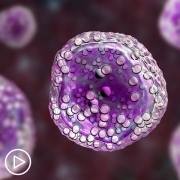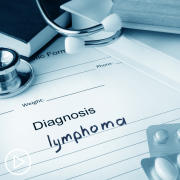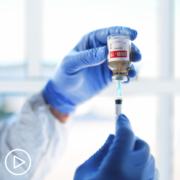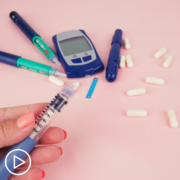Myeloproliferative Neoplasms Defined: What Are ET, PV, and MF? from Patient Empowerment Network on Vimeo.
What are essential thrombocythemia (ET) , polycythemia vera (PV), and myelofibrosis (MF) exactly? Dr. Naveen Pemmaraju explains how each of these blood disorders manifests along with the symptoms observed in these MPN patients.
Dr. Naveen Pemmaraju is Director of the Blastic Plasmacytoid Dendritic Cell Neoplasm (BPDCN) Program in the Department of Leukemia at The University of Texas MD Anderson Cancer Center. Learn more about Dr. Pemmaraju, here.
See More from Engage
Related Programs:
Transcript:
Katherine Banwell:
Can you help us understand the differences between ET, PV, and MF?
Dr. Pemmaraju:
Yeah, this is very important because we toss these words around as if there’s some big definition that was given, and oftentimes, that never happens. So, let’s pause to do that. So, this goes back to the 1950s when William Damashek, who really postulated the modern MPDs at that time as they were known – myeloproliferative disorders – really thought that there were four diseases that were similar at some level and then presented differently. So, that’s polycythemia vera, essential thrombocytosis, myelofibrosis, and CML, chronic myeloid leukemia.
Then, as the modern era comes in, CML is divided off because of the Philadelphia chromosome, BCR-ABL, which is present in 100 percent of those patients.
So, now we know CML is its own thing. And now we have the big three, sort of non-Philadelphia chromosome MPNs, as they’re now known, because neoplasm – cancer – instead of disorder. Within the subtype, and this is important, the subtypes that you mentioned are the most common.
So, polycythemia vera – poly meaning many, cythemia, cells, vera is Latin for true.
This is the designation for the patient who has a higher than expected blood red cell mass or hematocrit. And it actually, interestingly, Katherine, most patients with P vera have an increase in all three of their blood lines, so the red cells, hemoglobin, hematocrit, platelets, and white count. Those patients with PV are especially at risk for both bleeding and clotting, transformation to myelofibrosis, and even transformation to acute leukemia in maybe 5 to 7 percent of patients.
So, the usual treatment there, Katherine, is to bring off the blood mass. That’s the phlebotomy.
And then in the patient who is above the age of 60 or has a prior blood clot, to give some form of chemotherapy, hydroxyurea (Hydrea), or interferon, for example.
Now, the second grouping is ET, essential thrombocytosis. Again, this word vera or essential, meaning not reactive, not benign, not from a regular cause like a surgery or a trauma or an inflammation. So, it means a cancerous cause, an autonomous cause, something that’s coming on its own.
Thrombocythemia or thrombocytosis, meaning too many platelets. So, usually, patients with ET have too many platelets as their predominant manifestation. But again, as with P vera, patients can get into problems with that. Very, very high platelets, usually a million-and-a-half or higher, can actually lead to bleeding. Not necessarily clotting, but extra bleeding. And then patients with any platelet levels, because the platelet level doesn’t exactly correlate, can have either bleeding or clotting. So, that’s usually the predominant factor. And again, the underlying problem with these MPNs is that they can transform to the other ones – PV, MF, even acute leukemia.
And then, finally, myelofibrosis, which we could spend the whole hour on just by itself, is the more advanced state out of these.
So, it can either arise out of the PV or ET or stand alone. And really here, this is an advanced bone marrow failure state with bone marrow scarring or fibrosis. And now, usually, most patients, their blood counts, rather than high are now low because the bone marrow is unable to produce enough cells. And then, therefore, the sequela of the disease – anemia, thrombocytopenia. So, low blood, low platelets.
Then you need transfusions. The liver and the spleen get larger because they remember how to make blood cells. People can have a wasting away appearance. And then here, more than the PV or ET, this is more of an acute disease for many where if you have intermediate to high stage, these patients can transform more readily to leukemia and have a decreased overall survival.




























